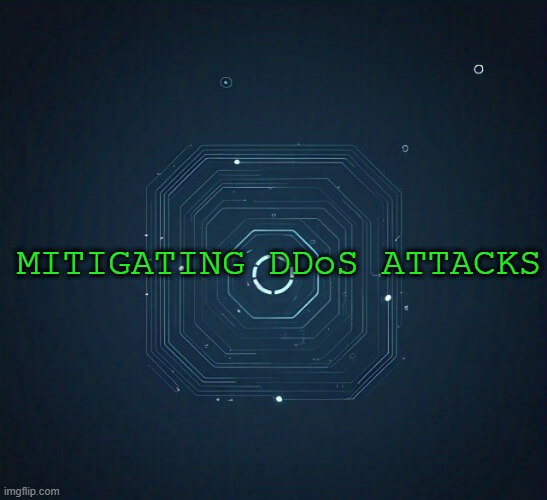DDoS (Distributed Denial-of-Service) attacks have evolved into a serious cybersecurity threat, disrupting businesses, financial institutions, and government services worldwide. In 2025, with increasing digital transformation and reliance on cloud computing, detecting and mitigating DDoS attacks has never been more critical.
This article explores how businesses can detect, prevent, and mitigate DDoS attacks, ensuring operational continuity and robust cybersecurity.
Understanding DDoS Attacks
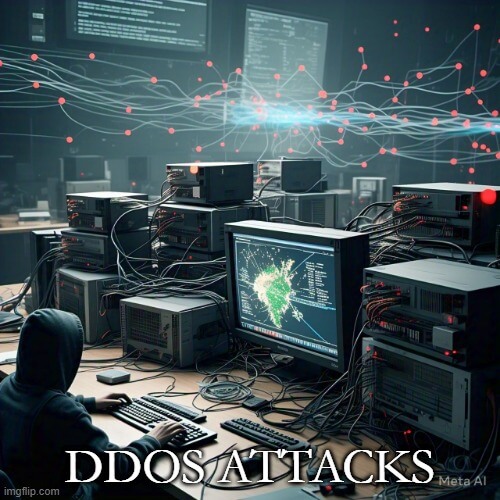
A DDoS attack occurs when cybercriminals overwhelm a target system with excessive traffic, causing slowdowns or complete service outages. These attacks are typically executed using botnets—networks of compromised devices—and come in multiple forms:
Volumetric Attacks: Consume bandwidth with a flood of traffic.
Protocol Attacks: Exploit weaknesses in network protocols.
Application Layer (Layer 7) Attacks: Target web applications and services.
Multi-Vector Attacks: Combine multiple attack types for greater impact.
Signs of a DDoS Attack
Detecting a DDoS attack early is essential for an effective response. Some key indicators include:
Unusual Traffic Spikes: A sudden surge in traffic from multiple locations.
Slow or Unresponsive Services: Websites, applications, or APIs slowing down or becoming inaccessible.
Unusual Traffic Patterns: High volumes of requests to a single endpoint or specific protocol.
Increase in Malformed Packets: Excessive SYN, UDP, or ICMP requests targeting network infrastructure.
Traffic from Suspicious IP Addresses: Requests originating from unfamiliar or blacklisted sources.
High Resource Utilization: CPU, RAM, and bandwidth consumption spiking without a legitimate reason.
Best Practices to Mitigate DDoS Attacks
1. Implement a Robust DDoS Protection Strategy
Modern businesses need a proactive DDoS mitigation strategy that includes multiple layers of security. Key components include:
DDoS Protection Services: Cloud-based solutions like Cloudflare, AWS Shield, Akamai, or Imperva that absorb malicious traffic.
Anycast Networks: Distribute traffic across multiple data centers to balance load and absorb attacks.
Rate Limiting and Traffic Filtering: Set request thresholds to prevent overwhelming a system.
2. Deploy Web Application Firewalls (WAFs)
A Web Application Firewall (WAF) filters malicious HTTP/S traffic at the application layer (Layer 7). Features of a WAF include:
Blocking automated bot traffic.
Filtering malicious requests.
Identifying and mitigating application-layer attacks.
Popular WAF providers include Cloudflare, AWS WAF, and Fastly.
3. Use AI and Machine Learning for Traffic Analysis
Artificial Intelligence (AI) and machine learning-driven security solutions can:
Identify abnormal traffic patterns.
Detect slow-building DDoS attacks in real-time.
Automate mitigation responses to reduce downtime.
Tools like Google Cloud Armor, Azure DDoS Protection, and AWS Shield Advanced use AI to strengthen defenses.
4. Implement Rate Limiting and IP Blacklisting
Rate Limiting: Restricts the number of requests per second from an IP to prevent excessive requests from overwhelming a server.
Geo-Blocking & IP Blacklisting: Blocks traffic from suspicious or high-risk regions and known malicious IP addresses.
5. Utilize Network Traffic Monitoring and Anomaly Detection
Continuous monitoring of network traffic helps identify potential threats before they escalate.
Intrusion Detection and Prevention Systems (IDPS): Identifies unusual traffic patterns and blocks suspicious activity.
Network Traffic Analysis Tools: Solutions like Wireshark, SolarWinds, and Splunk monitor network behavior and detect anomalies.
6. Establish a DDoS Incident Response Plan
A well-structured incident response plan ensures quick and efficient action in case of an attack. Essential elements include:
A dedicated DDoS response team.
Predefined mitigation steps for different attack types.
Clear communication channels to inform stakeholders.
Backup and failover strategies to maintain service continuity.
7. Strengthen Cloud Security Measures
With businesses moving to cloud environments, ensuring cloud DDoS protection is essential:
Enable cloud-based DDoS protection from providers like AWS, Google Cloud, or Azure.
Use content delivery networks (CDNs) to distribute traffic efficiently and absorb attacks.
Implement redundant failover systems to switch to backup servers in case of downtime.
Future Trends in DDoS Mitigation (2025 and Beyond)
With cyber threats evolving, businesses must stay ahead of new DDoS techniques. Emerging trends include:
AI-Driven Adaptive Security: Intelligent threat detection that learns attack patterns in real time.
Blockchain-Based Security: Decentralized solutions to prevent botnet-driven attacks.
5G and IoT Security Enhancements: Protecting IoT devices from being recruited into botnets.
Zero Trust Network Architecture: Verifying all traffic before granting access to internal systems.
Conclusion
DDoS attacks remain a serious threat in 2025, but businesses can effectively detect and mitigate attacks using advanced security solutions. By implementing DDoS protection services, AI-driven monitoring, and cloud-based security strategies, organizations can minimize risks and maintain service availability.
Staying proactive, continuously monitoring network activity, and leveraging the latest cybersecurity innovations are the keys to defending against DDoS threats in the modern digital landscape.
Why Businesses Trust SecureMyOrg For Comprehensive Network Security
At SecureMyOrg, we uncover and fix all possible security vulnerabilities of mobile and web, while providing solutions to mitigate risks. We are trusted by renowned companies like Yahoo, Gojek and Rippling, and with 100% client satisfaction, you’re in safe hands!







Some of the things people reach out to us for –
- Building their cybersecurity program from scratch – setting up cloud security using cost-effective tools, SIEM for alert monitoring, building policies for the company
- Vulnerability Assessment and Penetration Testing ( VAPT ) – We have certified professionals, with certifications like OSCP, CREST – CPSA & CRT, CKA and CKS
- DevSecOps consulting
- Red Teaming activity
- Regular security audits, before product release
- Full time security engineers.
Relevant Posts
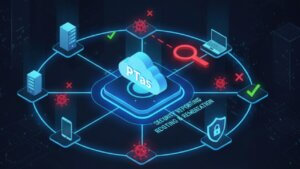
What Is Penetration Testing as a Service?
Penetration testing as a service (PTaaS) lets experts simulate real attacks to uncover vulnerabilities before hackers do. This guide explains the process, benefits, and costs, helping businesses strengthen defenses with predictable, ongoing security checks.

How To Inspect Encrypted Traffic Without Breaking Privacy
Network administrators face a challenge: securing systems while respecting privacy. This guide explains how to inspect encrypted traffic without breaking privacy using metadata, anomaly detection, and machine learning ensuring visibility, compliance, and trust.

How to Audit Infrastructure as Code (IaC) for Security Vulnerabilities
Discover how to audit Infrastructure as Code (IaC) for security vulnerabilities with this practical guide. Learn to scan IaC files using tools like Checkov, fix issues like exposed resources, and integrate audits into CI/CD pipelines. Protect your cloud systems from misconfigurations and ensure compliance with clear, actionable steps.
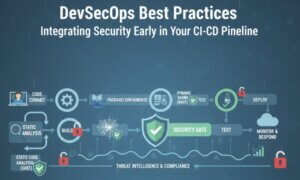
DevSecOps Best Practices: Integrating Security Early in Your CI/CD Pipeline
This article provides a practical guide to embedding security into every stage of your CI/CD pipeline. Learn core DevSecOps best practices like SAST, DAST, dependency scanning, secrets management, and compliance automation to catch vulnerabilities early, foster a culture of shared ownership, and build a secure-by-design development process that accelerates release cycles.

5 Cloud Misconfigurations That Lead to Data Breaches
Cloud misconfigurations are one of the leading causes of data breaches, yet they’re also among the most preventable. From exposed storage buckets to weak IAM policies, attackers exploit these mistakes daily. Learn about the top 5 misconfigurations and how your organization can fix them before they lead to costly data exposure.
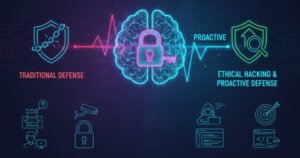
How Can Ethical Hacking Training Elevate Your Internal Cybersecurity?
Ethical hacking training empowers organizations to strengthen internal cybersecurity by uncovering vulnerabilities before attackers do. From mastering penetration testing to enhancing incident response, this training builds a proactive security culture. Learn how Secure My ORG’s programs can elevate your team’s skills and fortify defenses against modern threats like AI-driven attacks.
